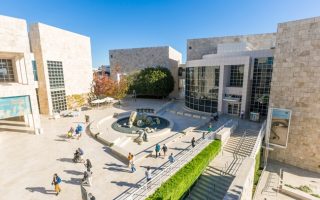Capturing the homes of Yves Saint Laurent and Pierre Bergé
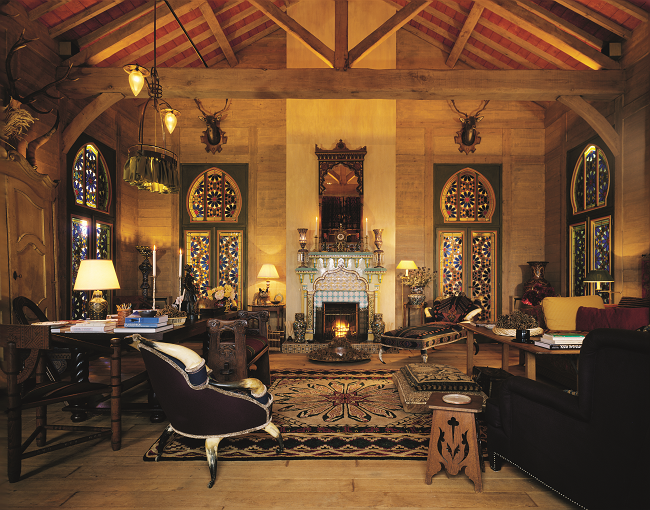
A dazzling new book by Jacques Grange takes readers on a dizzy tour of the homes of Yves Saint Laurent and Pierre Bergé. Photographer Marianne Haas reveals how she came to snap the dazzling abodes..
Yves Saint Laurent and Pierre Bergé were world-builders of an unparalleled calibre; true taste-makers who approached each interior project with imagination and rigour, crafting grand spaces infused with personality and provenance. Connoisseurs in every sense of the word with a deep knowledge and appreciation for art and interior design, the two built and lived among a spectacular and carefully-considered collection. In close collaboration with world-class designer Jacques Grange, they crafted private spaces full of wonder and enchantment.
In a fabulous new glossy volume by Grange, readers are invited to discover the couple’s savoir-faire through the most exquisite photographs of the interiors and gardens of Yves’s Château Gabriel, the dacha in Deauville; the Villa Majorelle in Marrakech; the apartment on Rue de Babylone; and his maison de couture on Avenue Marceau. With photographs by Marianne Haas, and texts and special contributions from Jacques Grange, Catherine Deneuve, Betty Catroux, Laurence Benaïm, Louis Benech and other members of Yves’s tribe, the creative couple’s legacy lives on.
Marianne Haas was born in Sursee, Switzerland, and is based between Paris and Zurich. She specialises in portraits of artists and designers, and interiors and gardens. Her work has appeared in Elle Décor, Elle Decoration, Elle, Vogue, Paris Match, Madame Figaro and Architectural Digest. Here she introduces the book…
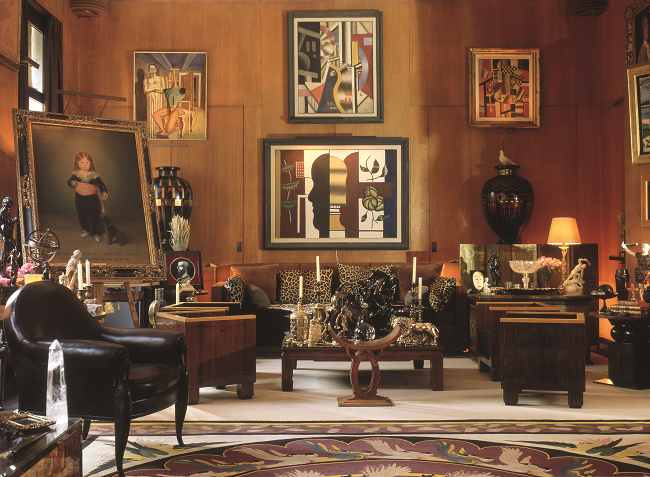
Three paintings by Fernand Léger hang on the wall at 55 rue de Babylone: ‘Le Profil Noir’, ‘The Yellow Checkerboard’ and ‘Composition dans l’usine’ © Marianne Haas
1982
I had hardly been back in Paris after five years in the States when the telephone rang. It was Jacques Grange, asking me to meet with Pierre Bergé, who needed someone to photograph the pieces in their collection for insurance purposes. Not quite the dream job, but as I was completely broke and Jacques insisted, I met Pierre.
He showed me the apartment on Rue de Babylone, with its incredible collection. It looked more like a museum than a residence. I pointed out that I didn’t have the right cameras. “No problem,” he replied. “Buy what you need.”
In addition to photographing the small items, we installed a studio on the top floor, with an elevator. My assistant, Jacques Pepion, and I spent three months photographing it all.
One day I was carrying an alabaster cup filled with necklaces, and it suddenly broke apart into four pieces. I went down to the apartment, where I met Bernard, the valet, who, with malicious joy, called out, “Monsieur Saint Laurent, she broke something!”. In a flash, Yves arrived, assessed the damage and discovered that the cup had previously been broken and glued.
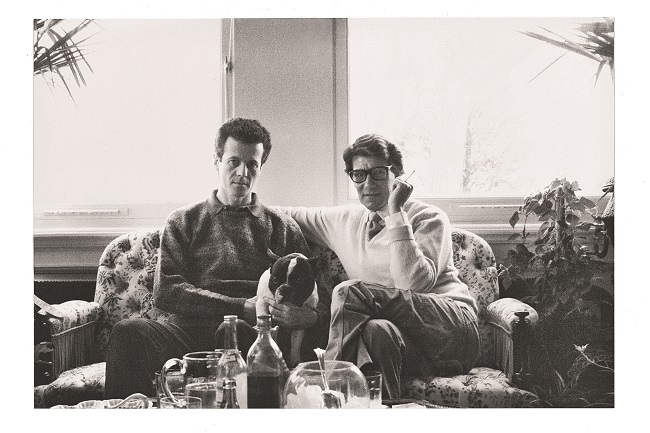
Yves Saint Laurent and Pierre Bergé © Courtesy of Jacques Grange
I enjoyed going to work there every day. I learned how to photograph bronze sculptures, paintings, crystals and more, which helped me a lot later on when I photographed interiors for famous designers.
One morning I arrived at the apartment as usual, when Bernard told me with a mischievous smile that he had a message from Monsieur Saint Laurent for me. It was a scolding. The day before, we had photographed a sculpture by Constantin Brancusi that was perched high above the fireplace on a base, reachable only with a ladder. It was comprised of three pieces that fit together, which we disassembled and re-assembled in the studio to photograph, before putting the sculpture back in its place. What made Monsieur Saint Laurent so angry was that we had re-assembled the pieces in the wrong formation, but the sculpture had looked okay to us. It was always tricky to move an object, even a centimetre: he saw any error immediately, and it drove him crazy. Eventually we bought a Polaroid SX-70 for scouting, which saved us from further blame.
One day Pierre came home for lunch and called Bernard to tell him that he had some great news: he had just bought a grave for him. Bernard protested and said he already had one, and that he wanted to be buried in his family’s plot in the countryside. “But,” Pierre protested, “I bought this tomb for you and you will go there.” I don’t know the end of the story.
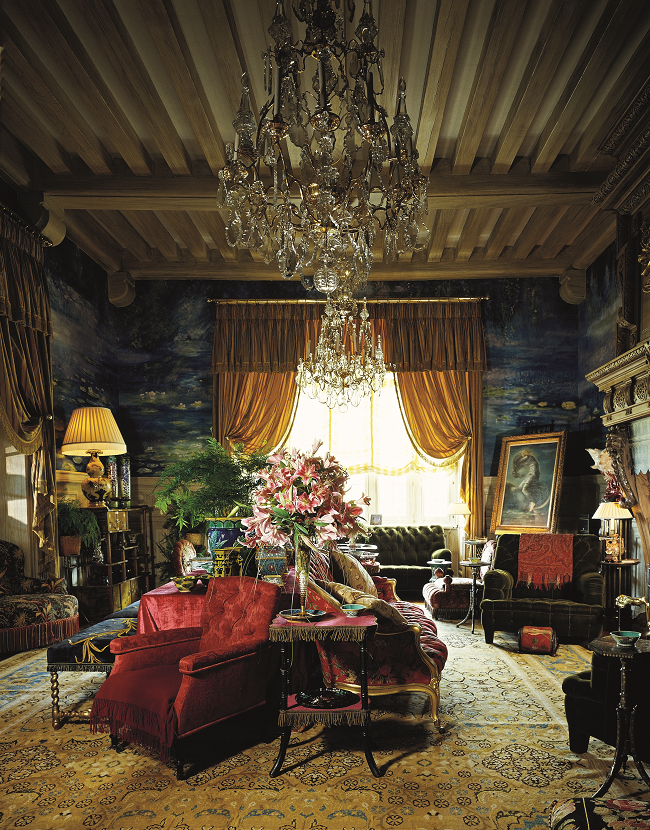
Château Gabriel’s sumptuous interiors inspired by L’Innocent by Italian filmmaker Luchino Visconti © Marianne Haas
SOME YEARS LATER…
“As a child I dreamed of having a cabin,” said Pierre Bergé. “After we came back from a trip to the USSR, where we visited Moscow and Leningrad, we remained immersed in the Russian spirit. During the trip we had bought a 19th-century book on Russian wooden architecture, which inspired the idea of building a luxury cabin, a dacha, and with a little help from our friend Jacques, this dream came true.”
To photograph the garden, Pierre gave us the keys to the gate with the permission to come and go as we pleased. We made several trips, depending on the blooms and the weather. Sometimes Pierre would call me to say certain plants were in bloom and that I had to come. To create this garden, Pierre and Yves were greatly inspired by English landscapers and Impressionist paintings. Yves also loved to populate the garden with statues, as did Cocteau, mysteriously.
To photograph the pond, we set up the camera a day early, facing the sun. It was still dark when we arrived. We waited for the sunrise, “and here comes the sun… Sun, sun, sun, here it comes”. It was a rush to take the photo in the perfect glow before the sun appeared and ruined the light. Photographing the Château Gabriel was like working on a Luchino Visconti film set. At any given moment Helmut Berger, Alain Delon or Claudia Cardinale could appear at the door. There were enough bedrooms for these prestigious guests, and all the bedrooms were named after the characters in Marcel Proust’s novel, In Search of Lost Time. Baron de Charlus, Charles Swann, Prince de Guermantes, Basin, Oriane de Guermantes. The rooms still await guests.
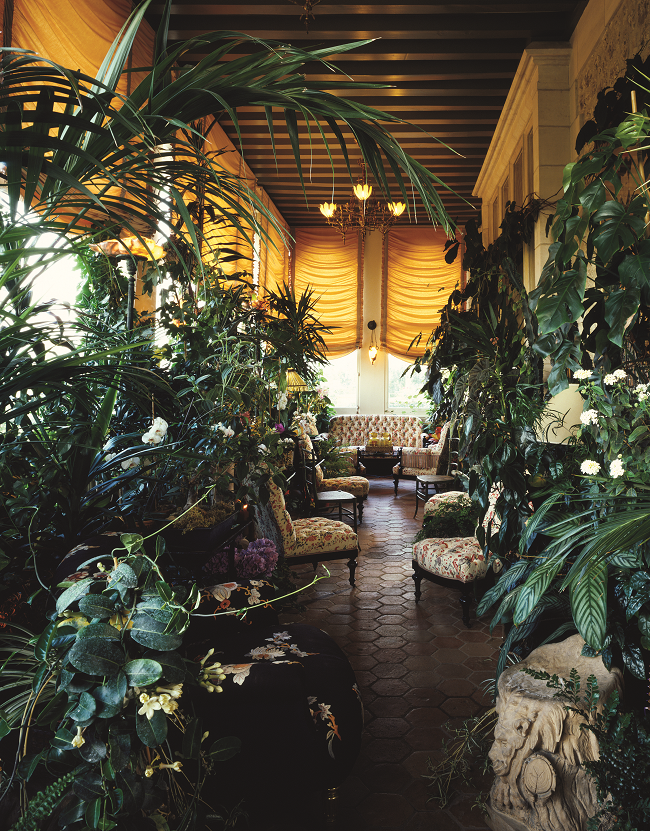
the winter garden at Château Gabriel, home to exotic flowers, palm trees and ferns, where Yves liked to entertain his guests © Marianne Haas
PART III
Immediately off to Marrakech. After our flight landed, we collected our bulky luggage and were instantly stopped by a customs officer, who asked for our permission documents for the equipment. There was a problem with the forms, and our materials were confiscated.
After a few days we had the right forms. We went to the customs office at the airport, but it was closed. It had been a week, and we still hadn’t gotten the equipment back. On top of it all, they had closed the roads because King Hassan II was supposed to leave on a trip. Finally, after more than a week, we were able to recover our equipment – but with a deposit check of 20,000 francs (about $3,000). Amid all of this, we were living with Jacques Grange and Pierre Passebon at the Villa Dar es Saada, the “house of happiness”. It was once the residence of Yves and Pierre before they acquired the Majorelle Garden, with its workshop and villa. The Majorelle estate, abandoned since the death of painter Jacques Majorelle, required major restoration. Once restored, it was renamed Villa Oasis.
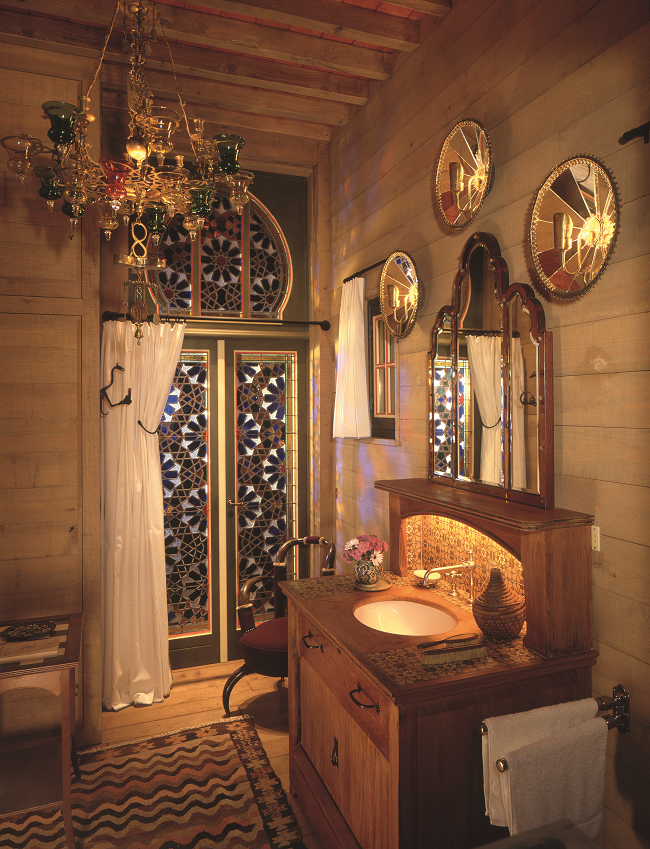
The bathroom at Château Gabriel © Marianne Haas
When Yves discovered Marrakech in 1966, it was love at first sight. At the same time, a certain architect named Bill Willis arrived in Marrakech, accompanied by Paul and Talitha Getty, never to leave again. He was eccentric and very chic, and had the look of a pop star. His visual aesthetic, his creativity and his inventiveness made him one of the greatest modern Moroccan architects of his time.
Yves and Bill became friends. They shared the same passions, and naturally Pierre and Yves asked him and Jacques to restore the Villa Oasis. It was the Marrakech years.
The Palmeraie was still wild, there was no golf or swimming pools, and almost no one had a telephone. You needed messengers to communicate. To invite a friend for dinner you sent a messenger with a note, and they would come back with the answer. This way of living allowed an escape from everyday life, from the hustle, and a devotion to creative activities and leisure. Five years later the villa was restored, respecting the Majorelle spirit, in an Indo-Moorish re-creation. It was magnificent.
PART IV
We took possession to photograph the estate. Every morning we went to the garden through the Bab Doukkala Gate in 20 minutes. Fatima prepared a picnic for us, which we savoured at the kiosk in the middle of the water lily pond. Who could dream of a better job?
PART V
Back in Paris, we went to see Yves to show him the photos. I had mounted the Ektas in a black frame. He liked it very much. We drank champagne late into the night, and Pierre drew cards for everyone. All’s well that ends well.
From France Today Magazine
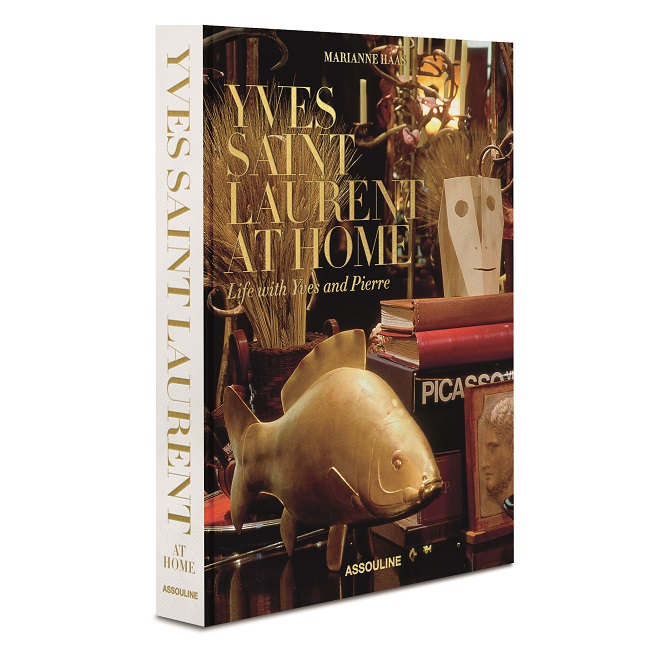
Yves Saint Laurent at Home
Words by Jacques Grange
Preface and photography by Marianne Haas
Introduction by Laurence Benaïm
Published by Assouline, €105
Lead photo credit : The home of Yves Saint Laurent and Pierre Bergé © Marianne Haas
Share to: Facebook Twitter LinkedIn Email
More in fashion designer, French design, Interior Design, Paris, photography, Yves St Laurent
Leave a reply
Your email address will not be published. Required fields are marked *


